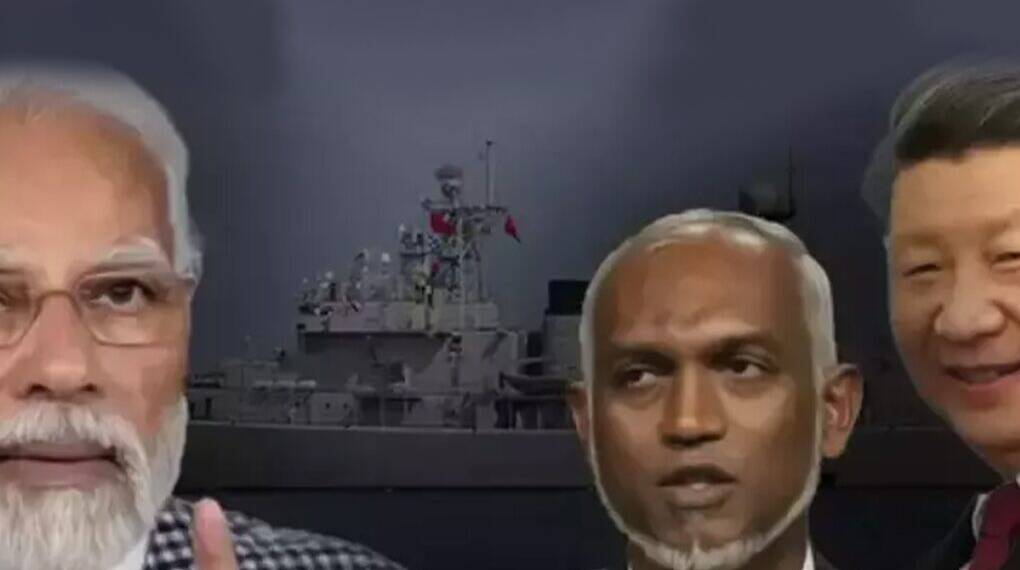In the high-stakes geopolitical theatre of the Indian Ocean, few diplomatic turnarounds have been as swift and strategically consequential as India’s revival of ties with the Maldives. Just over a year ago, the two nations were locked in an acrimonious standoff, punctuated by anti-India slogans, troop withdrawal demands, and Chinese diplomatic overtures.
Today, Prime Minister Narendra Modi is being welcomed as the Guest of Honour at the Maldives’ 60th Independence Day celebrations — a moment rich in symbolism and substance.
This dramatic shift from estrangement to embrace is not just the result of backroom diplomacy or economic largesse. It is a case study in strategic patience, regional realism, and India’s ability to outmaneuver China’s expanding influence by leveraging geography, shared history, and soft power.
Phase One: A Relationship Strained
The low point came in late 2023 when President Mohamed Muizzu, elected on a populist “India Out” campaign, actively distanced the Maldives from New Delhi. Indian defence personnel — stationed under bilateral agreements — were portrayed as symbols of undue interference. Muizzu’s early visits to Turkey and China, coupled with his pointed absence from Indian platforms, were clear messages of realignment.
Beijing, eager to fill the vacuum, quickly rolled out red carpets and credit lines. Chinese-backed infrastructure projects resumed and talk of replacing India’s role in Maldivian development gained traction. With the Chinese Belt and Road Initiative (BRI) lurking in the background, the situation looked like another classic pivot in South Asia’s balance of power.
Phase Two: Delhi’s Diplomatic Discipline
India, however, chose not to react with fire and fury. It practiced a quiet, calculated diplomacy.
Rather than confront Muizzu’s posturing with counter-rhetoric, New Delhi engaged through senior-level outreach. When Muizzu took office, India sent a Cabinet-level minister to his swearing-in — a strong signal of respect. PM Modi met Muizzu at COP28 and again at international summits, offering dialogue even amidst growing public antagonism.
Crucially, India agreed to withdraw its military personnel without abandoning its strategic presence. In a deft manoeuvre, the troops were replaced by civilian technicians in May 2024 — ensuring continuity in aviation and radar operations while satisfying Maldivian political optics.
Phase Three: Economic Muscle Meets Strategic Patience
Behind the scenes, India fortified its influence where it mattered most — in the Maldivian economy. As Chinese loans edged the Maldives closer to a debt crisis (its debt-to-GDP ratio topping 110%), New Delhi quietly extended lifelines:
Rolled over $150 million in Treasury Bills
Offered a $750 million currency swap
Approved a ₹30 billion line of credit
Slashed debt repayments by 40% during PM Modi’s visit
These weren’t just financial gestures. They were stabilizers that prevented a sovereign default, curbed China’s leverage, and reaffirmed India’s indispensability. Indian aid was accompanied by high-impact infrastructure — the Hanimaadhoo Airport, the Greater Malé Connectivity Project — all progressing steadily with Indian funding and execution.
Unlike China’s debt-driven infrastructure deals, India’s projects came without political strings or hidden costs, earning it goodwill among Maldivians, particularly in the business and tourism sectors.
Phase Four: Strategic Optics, Real Results
Modi’s July 2025 visit — his first under a non-MDP (Maldivian Democratic Party) government — is the culmination of this effort. By standing beside Muizzu during the Maldives’ most symbolic national event, both leaders signalled a reset.
India showcased itself as a patient, mature power — willing to engage across political spectrums, respecting sovereignty, yet assertive in protecting its strategic interests. In return, Muizzu gained political capital at home: an image of a sovereign leader who stood his ground, negotiated fairly, and secured essential Indian support without appearing subservient.
Geography, Not Just Diplomacy
At the heart of this realignment lies a simple truth: geography is destiny.
The Maldives’ proximity to India — just 70 nautical miles away — makes cooperation not just preferable, but necessary. From drinking water to disaster relief, from medical supplies to tourism, India is the Maldives’ most reliable partner. When Malé’s desalination plant failed in 2014, India launched “Operation Neer” within hours. During COVID-19, India’s Vaccine Maitri delivered life-saving supplies when few others could.
Even the staples of daily life — fuel, food, medicine — flow predominantly from Indian shores. And with Indian tourists historically comprising over 20% of the Maldives’ visitors, economic interdependence runs deep.
This interlocking of strategic geography and economic dependence makes Chinese overtures — however grand in narrative — limited in utility.
Lessons for the Region: India’s Model vs China’s Template
India’s playbook in the Maldives offers a broader regional lesson. Rather than matching China loan-for-loan, India is differentiating itself through responsible partnerships. Its initiatives come with transparency, sustainability, and respect for local agency — contrasting with China’s often-criticized “debt trap” model.
By combining infrastructure with cultural diplomacy, political restraint with economic power, and strategic clarity with flexibility, India is cementing its place as the Indian Ocean’s most credible regional anchor.
From ‘India Out’ to ‘India Inescapable’
The transformation of India-Maldives relations from hostility to high table diplomacy is not accidental — it is the result of strategic maturity. India understood that short-term political posturing in Malé could not override long-term geographic and economic realities. By holding its nerve, New Delhi allowed the inherent logic of proximity to assert itself.
Today, as PM Modi walks the red carpet in Malé, the optics are powerful — but the message is even more profound: India remains the Indian Ocean’s irreplaceable partner. And for the Maldives, no matter the political winds, the compass inevitably points north — toward India.








